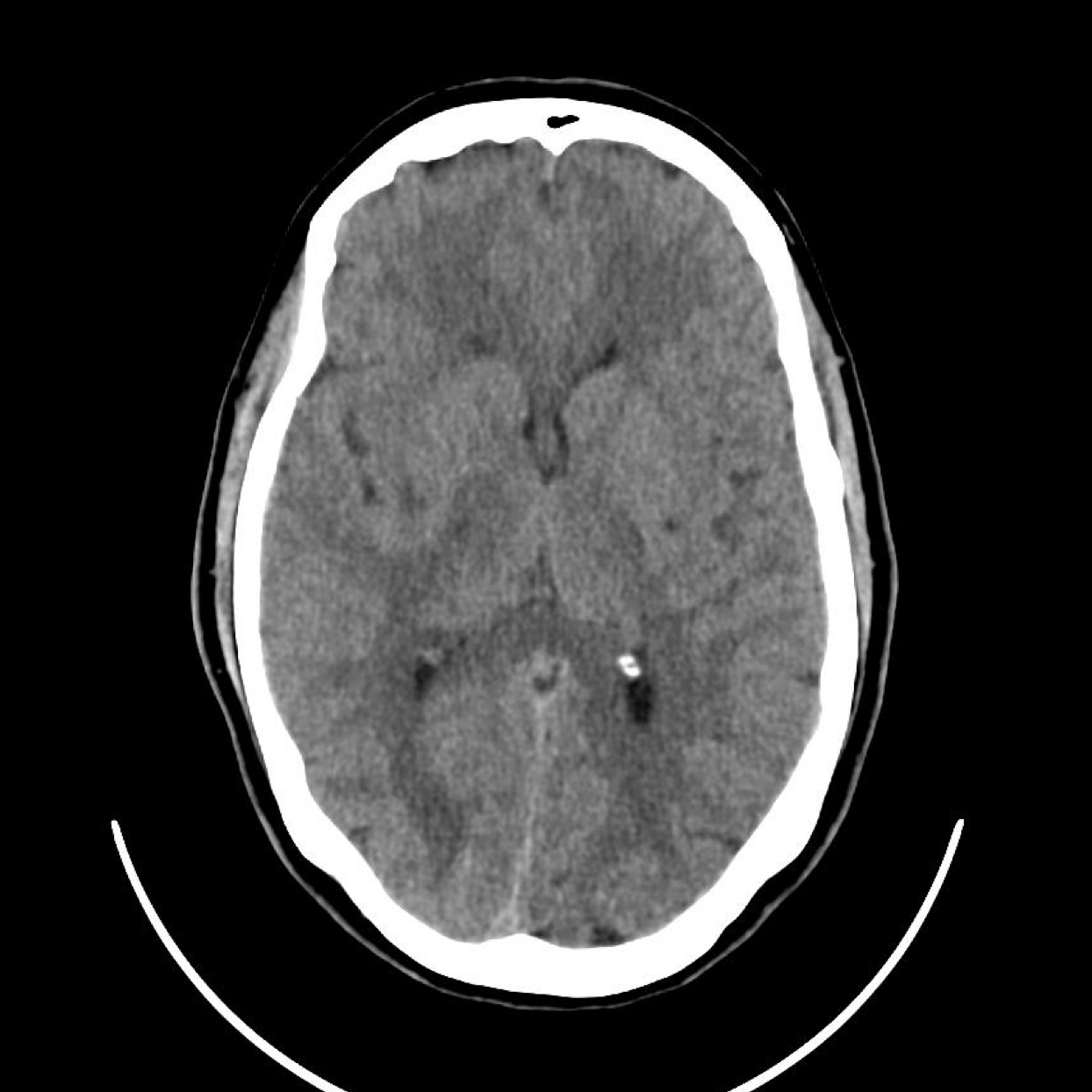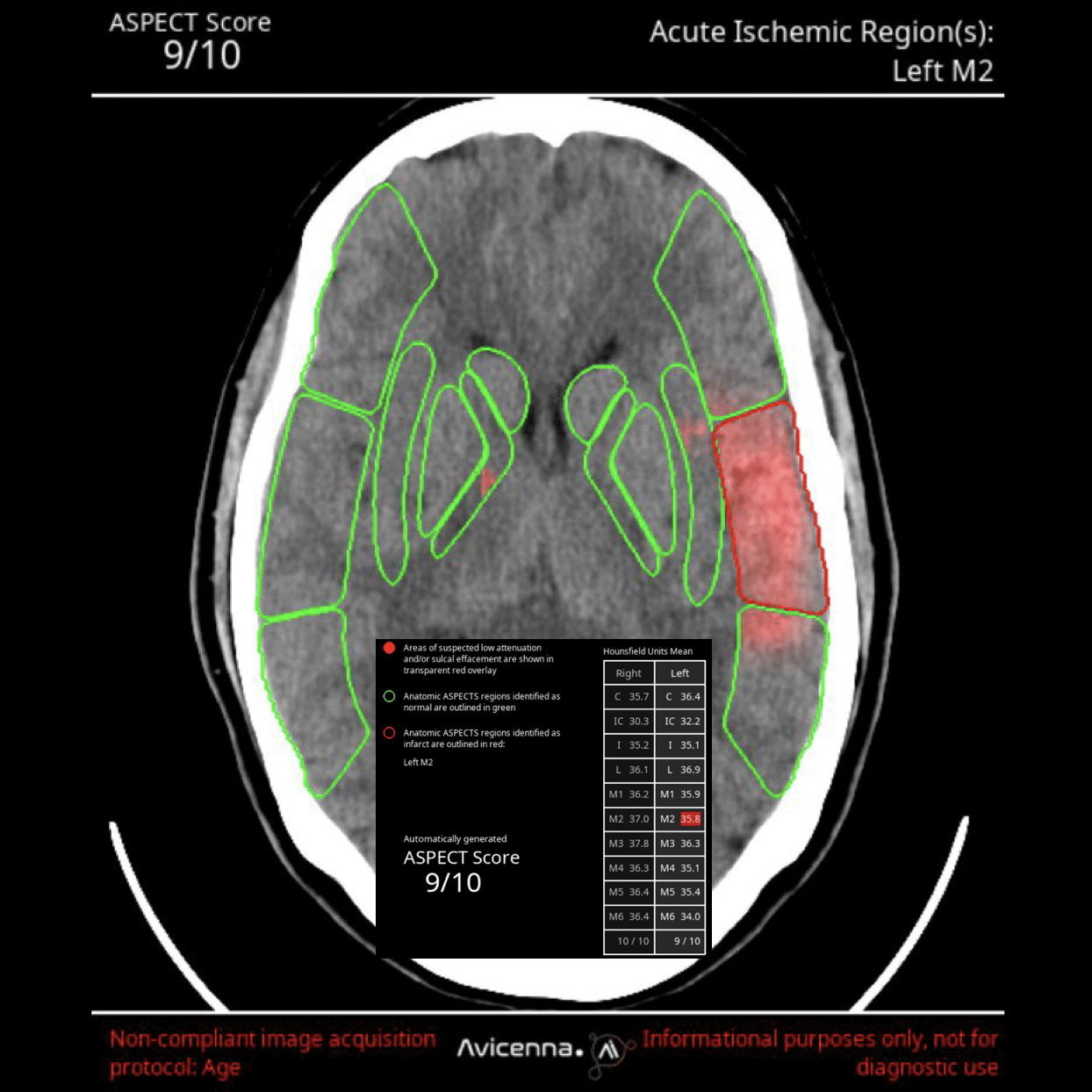factsheet
CINA-ASPECTS reports suspected acute intracranial ischemia in CT studies and enables the prioritization of these patients. The assistant provides radiologists and emergency physicians with an outstanding presentation of the findings in words and images.
CINA-ASPECTS detects low attenuation of the supratentorial tissue and sulcal corticomedullar disorders. The eponymous topographical ASPECTS is used for the analysis: the supratentorial tissue is divided into ten regions of the middle cerebral artery supply per hemisphere to describe ischemia in one of the two hemispheres. The suspected pathological areas are marked in color and listed in a table with information on the mean density values per region. From this, the ASPECTS for both hemispheres is calculated and given.
We also evaluated CINA-ASPECTS together with two other assistants, CINA-ICH and CINA-LVO, which were developed to detect hemorrhagic and non-hemorrhagic strokes in CT studies. Find out more in our AI assistants!
Non-enhanced cerebral CT studies of any CT scanner; axial reformations; minimal matrix size 256 x 256; maximal slice thickness 2.5 mm; tube current 100 kVp to 160 kVp (recommended 120 kVp to 140 kVp); soft tissue reconstruction kernel
Non-enhanced cerebral CT of a 50-year-old patient with acute right sided paresthesia about one hour before the examination. Slightly low attenuation of the left temporal lobe is particularly visible when comparing the sides. No intracranial hemorrhage is visible (left).
CINA-ASPECTS identifies the hypodensities and correctly assigns them to the left M2 territory (right, red). In addition, the results are tabulated, the ASPECTS is calculated as 9/10.
Similar AI Assistants

Brainscan CT
Brainscan CT reports acute and chronic intracranial processes in CT scans using tables and heat maps.
CT
Head and Neck

CINA-IPE
CINA-IPE detects acute pulmonary artery embolism in CT angiographies.
CT
Head and Neck

CINA-ICH
CINA-ICH detects acute intracranial hemorrhage in cerebral CT studies.
CT
Head and Neck

CINA-LVO
CINA-LVO detects acute intracranial artery occlusion in CT angiographies.
CT
Head and Neck
Pixelshine
PixelShine generates significantly improved quality from these noisy images, for example in obese patients. Secondly, the lifespan of CT scanners is extended by reducing the load on the CT tubes.
CT
Multiple Organs


